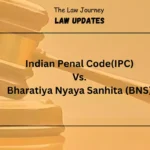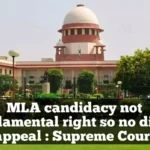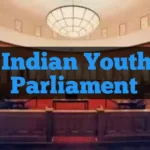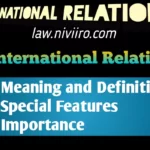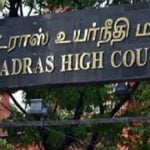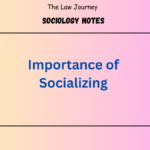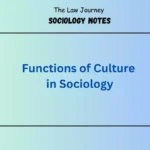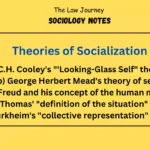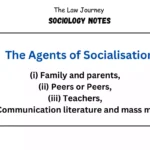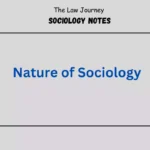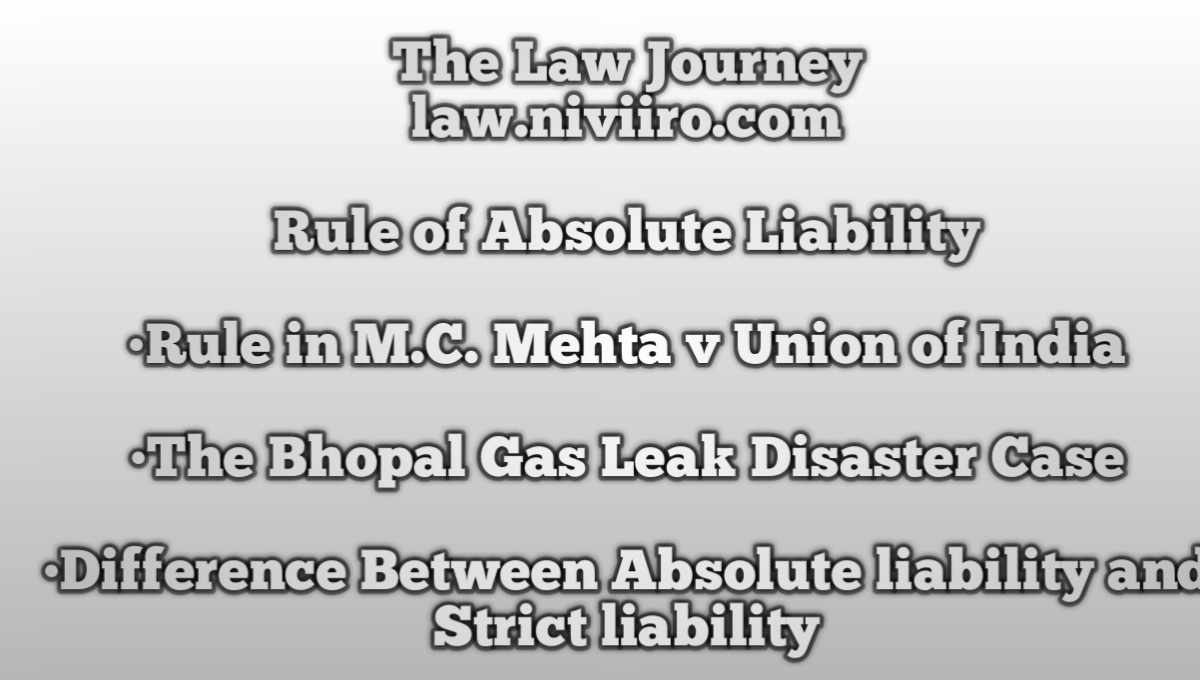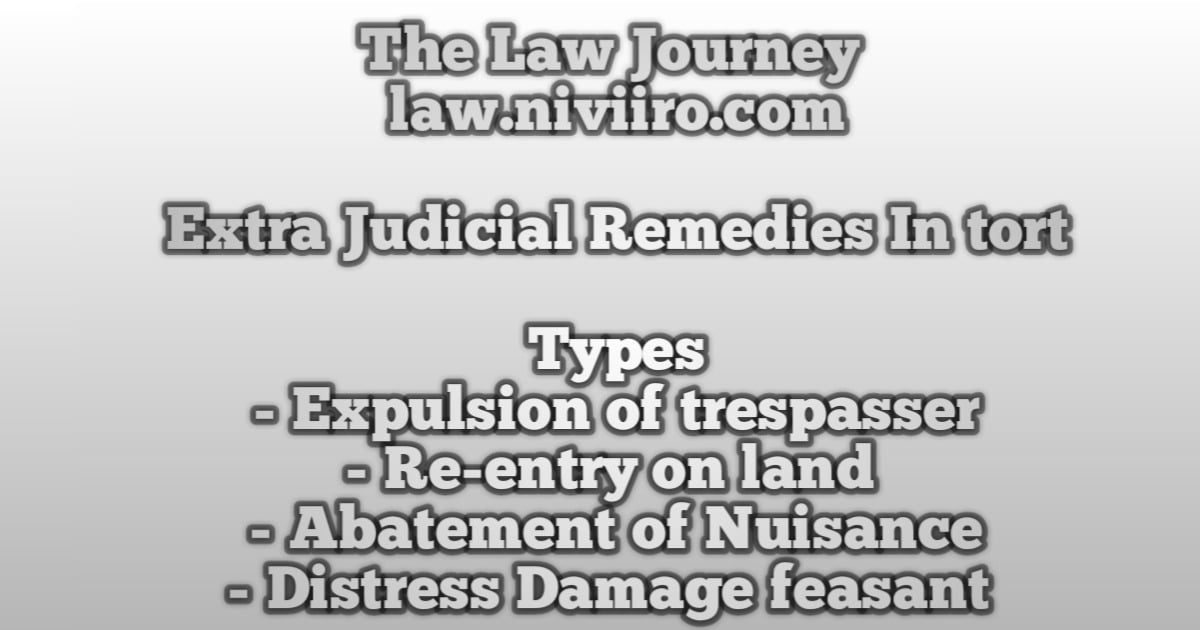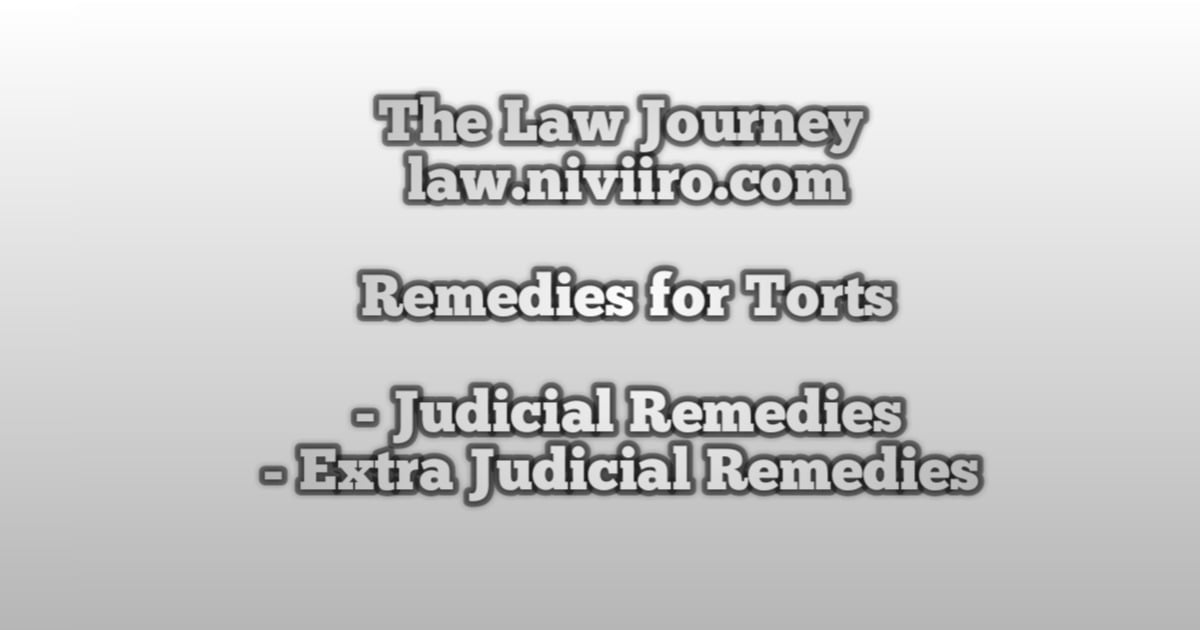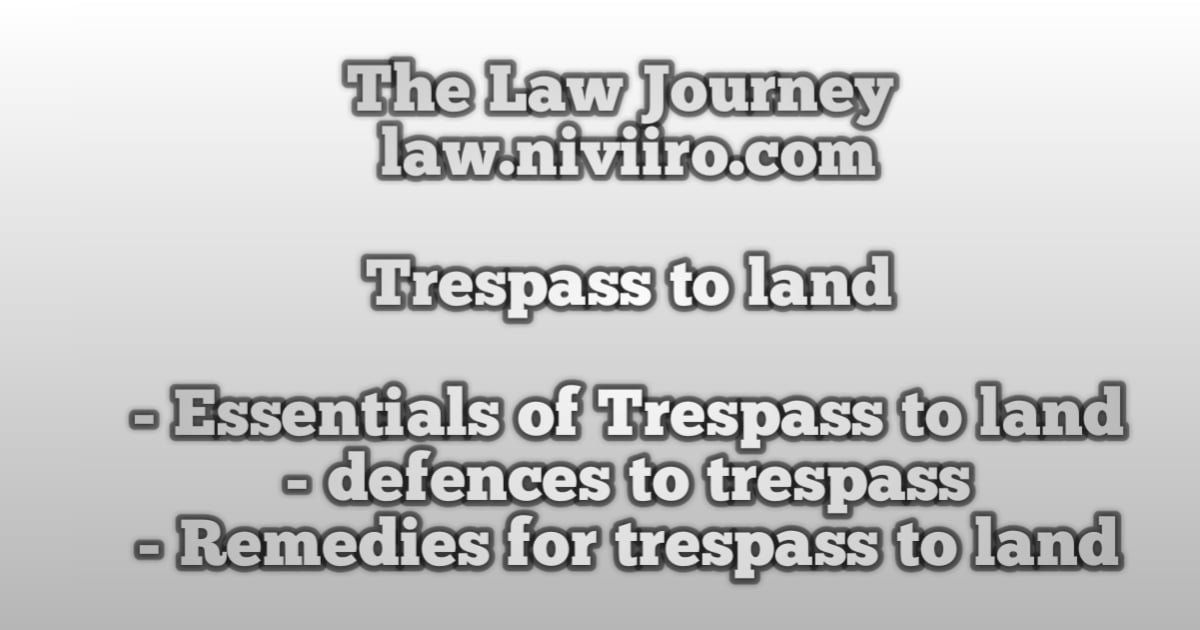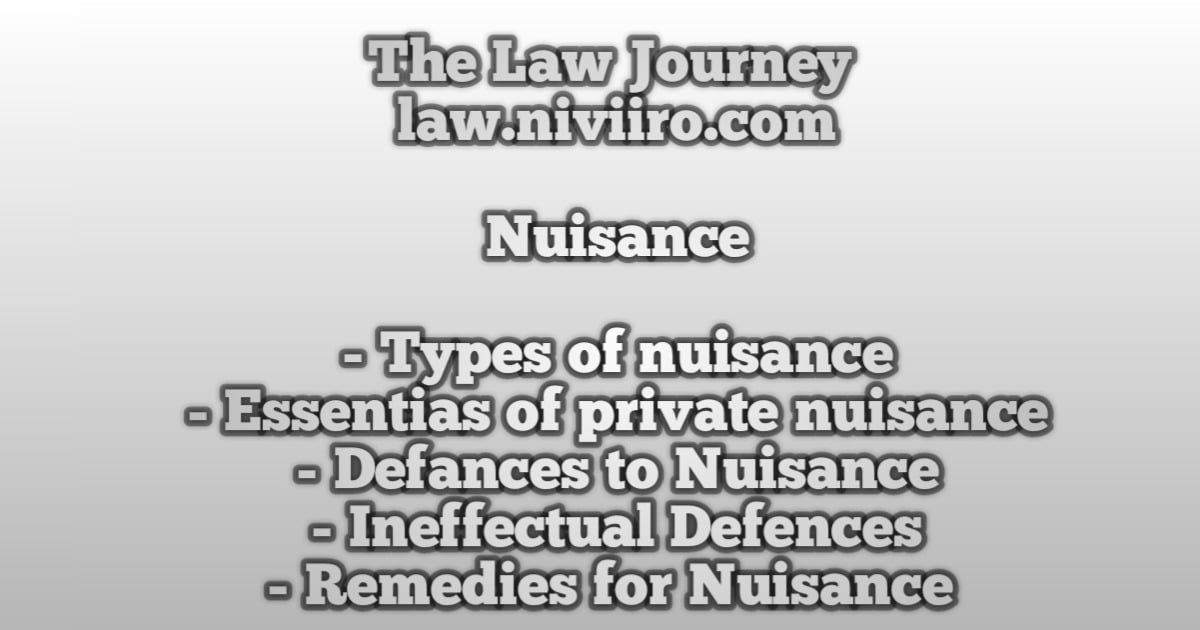Rule of Absolute Liability, On 1st January, 1987 a new beginning started in India pertaining to the law of Strict Liability. Bhagwati C.J. ; did not follow the principles laid down in the case of Rylands v. Fletcher.
The Court had to assess what the measure of liability of an entity operating in a hazardous or intrinsically dangerous business was if individuals died or were wounded as a result of an accident happening in such industry.
The Court noted that the rule in Rylands v. Fletcher was developed in 1868 and cannot be applied in the present world. To progress in the modern world, advancements in science and technology are required, which necessitates the presence of hazardous and intrinsically dangerous businesses.
As can be seen, the rule of strict responsibility established in Rylands v. Fletcher in 1868 was deemed inadequate for contemporary industrial society, and therefore the Supreme Court established a new rule of absolute liability that differs significantly from the current rule of strict liability.
Some inferences from this decision-
- Enterprises engaging in hazardous or intrinsically dangerous activities would be responsible, and for those who do not fit into this group, the Rylands v. Fletcher rule would apply.
- The escape of harmful things from one’s land to another is not required, therefore the law will apply to both those who remain outside and those who remain inside the premises.
- the rule is without any exception.
- the quantum of damages depends upon the magnitude and the financial capacity of the defendant’s enterprise. Here, the Supreme Court veered away from the principles of tortiuous liability.
Rule of Absolute Liability In M.C. Mehta v Union of India
In M.C. Mehta v Union of India (AIR 1987 SC 1086), the Supreme Court established new tortuous liability concepts that were not even recognised by English courts. It established the norm of “absolute responsibility” as part of Indian law, as opposed to the concept of “strict liability” established in Rylands v Fletcher. It explicitly stated that the new rule was not subject to any of the Rylands exceptions. Because those who had created hazardous enterprises in and around densely inhabited regions may avoid culpability for the devastation produced by claiming an exception to Rylands’ rule.
For instance when the escape of the substance causing damage is due to the act of a stranger, say due to sabotage, there is no liability under the Rylands rule.
M.C. Mehta, a social activist lawyer, sought the closure of Shriram Industries because it manufactures hazardous substances and is located in a densely populated area of Delhi. While the petition was being processed, oleum gas leaked from one of its units, injuring several people.
A three-judge panel approved the partial reopening of the factory but ordered the business to implement all essential safety precautions. The Delhi Legal Aid and Advice Board and the Delhi Bar Association submitted compensation petitions on behalf of persons impacted by the gas leak in the initial case filed by M.C. Mehta.
The case is referred to a larger bench of five judges. While the 3-judge bench extended the scope of the right to life and said that the State had power to place restrictions on carrying of hazardous industrial activities, the 5-judge bench made further extension of the right and held that the right to life contains the right to claim compensation to victims of pollution hazards.
The Bhopal Gas Leak Disaster Case
On the night of December 2/3, 1984, an unparalleled calamity was created by the release of MIC, a highly poisonous gas from the Union Carbide factory in Bhopal, resulting in the death of over 3,000 people and injuries, primarily serious and permanent, to over 6 lakh others. Because the accident had touched a huge number of people, the majority of whom belonged to lower economic strata, a class action was the only way out.
The Government of India approved the “Bhopal Gas Leak Disaster (Processing of Claims) Act, 1985,” which gave the government the exclusive power to represent gas victims seeking compensation. The Union of India brought a lawsuit against the Union Carbide Corporation (UCC) in the United States District Court for the Southern District of New York, but it was rejected on the grounds that Indian courts are the more convenient and suitable place for such an action.
The Government then filed a suit for compensation in the District Court of Bhopal, which ordered that the UCC should pay interim relief of Rs. 350 crores to the gas victims. On a civil revision petition filed by the U.C.C., the Madhya Pradesh High Court reduced the amount of ‘Interim relief payable to Rs. 250 crores.
Difference Between Absolute liability and Strict liability
- The rule of absolute liability does not have any exceptions, whereas there are some exceptions are provided in rule of strict liability.
- The rule of strict liability was made in England by justice Blackburn, whereas the rule of absolute liability was made in India by justice Bhagwati.
- The principle of strict liability was laid down in the case of rylands v. Fletcher, whereas the principle of absolute liability was laid down in the case of mc. Mehta vs Union of India.
- Strict liability rule makes the defendant strictly liable where he brings something dangerous and the thing escapes, whereas absolute liability rule makes the defendant liable if the activity is dangerous or dangerous.
- The rule of strict liability applies in non natural use of land but the absolute liability apply to even the natural use of land.
Related Post
Who introduced the law of absolute liability ?
Bhagwati C.J. introduced the law of absolute liability.
Difference Between Absolute liability and Strict liability ?
1. The rule of absolute liability does not have any exceptions, whereas there are some exceptions are provided in rule of strict liability.
2. The rule of strict liability was made in England by justice Blackburn, whereas the rule of absolute liability was made in India by justice Bhagwati.
3. The principle of strict liability was laid down in the case of rylands v. Fletcher, whereas the principle of absolute liability was laid down in the case of mc. Mehta vs Union of India.
References
- A.K Jain law of torts
- Law of Torts by RK Bangia (22nd Edition)
- Universals Law of Torts
- Law of Torts by Ratanlal and Dhirajlal
- P.S.A. Pillai’s – Law Of Tort
- Law of Torts by J.N. Pandey

